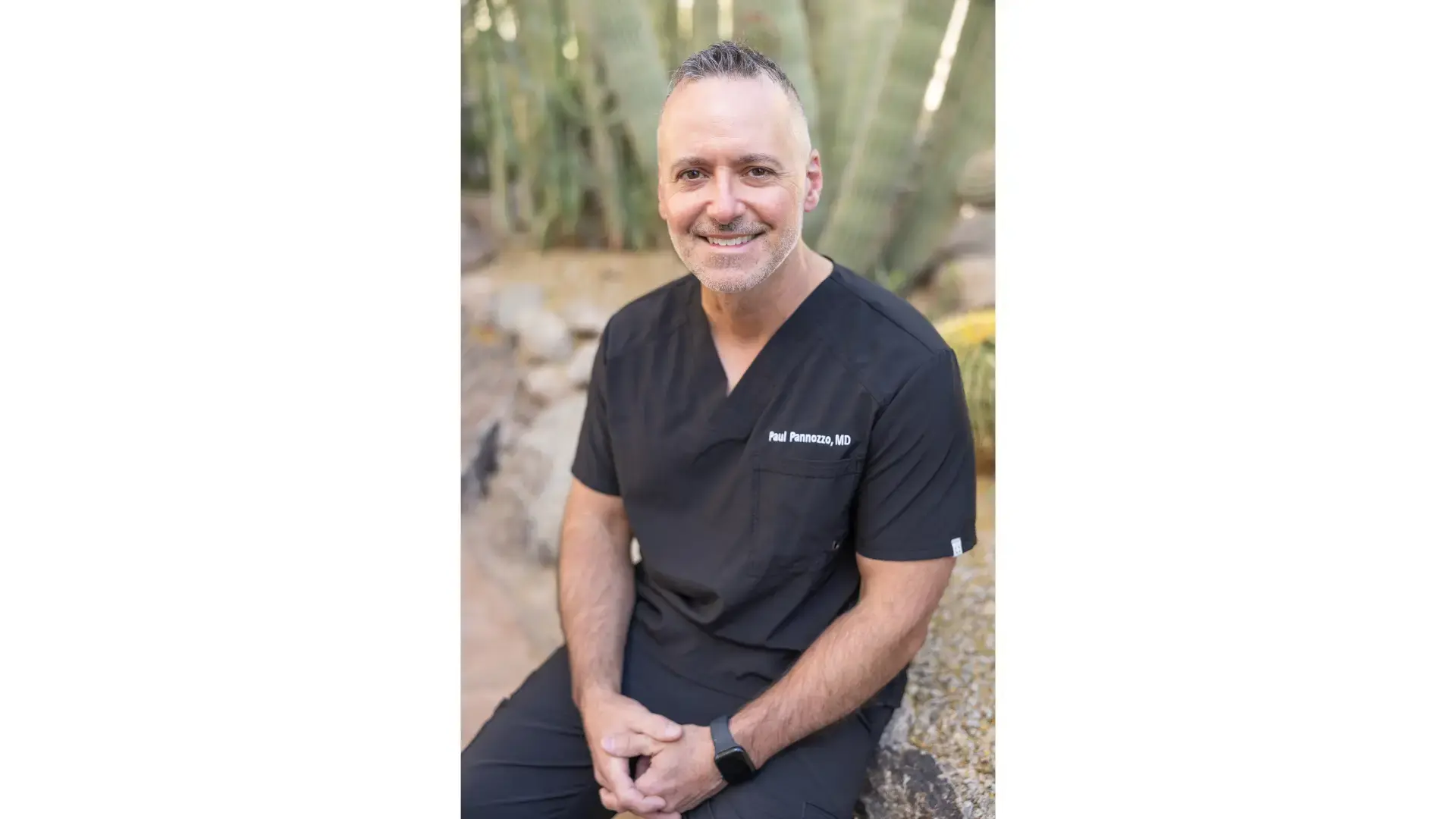How a Physiatrist Approaches the Biggest Challenges in Modern Spine Care

Traditional spine care has often relied on opioids and surgery for treatment. Yet, as many have seen, these approaches have frequently led to poor long-term outcomes. Dr. Brad Sorosky, a Desert Spine and Sports Physicians physiatrist and Top-Doc award recipient, witnessed this firsthand so decided to practice differently.
Abandoning traditional opioid-based models surrounding spine care, his patient-centric practice has always emphasized non-surgical, evidence-based treatments that restore function and improve pain while reducing the harmful risk of opiate-medications.
Through regenerative therapies like platelet-rich plasma (PRP), advanced injection techniques, and individualized care plans, Dr. Sorosky and his team offer a holistic approach that prioritizes lasting relief and long-term wellness.
A Shift Away from Opioids: A Commitment to Safer Practices Through Regenerative Medicine
As Dr. Sorosky explains, early in his career, the standard approach included routine opioid prescriptions—but the outcomes of this were consistently poor. Patients remained in pain, experienced functional decline, and in some cases, even became dependent. These patterns prompted a fundamental rethinking of how providers should approach spine care.
He shares, “Our core philosophy centers on a comprehensive health and wellness approach to patient care, which naturally excludes reliance on opioids.”
This focus on non-opioid, evidence-based medicine has allowed Desert Spine and Sports Physicians to prioritize what matters most: sustainable relief, restored function, and improved quality of life. Instead of masking symptoms, the team focuses on identifying and treating the root cause of pain through regenerative medicine, precise interventional procedures, and comprehensive rehabilitation strategies.
Patients can expect a collaborative, individualized approach grounded in clinical rigor and compassion. From the first evaluation, spine care at Desert Spine is centered on restoring long-term function, not simply managing pain.
The Role of Regenerative Medicine in Spine and Joint Care
Regenerative medicine isn’t a trend—it’s a rigorously applied, evidence-based extension of their commitment to minimally invasive, whole-person care. “I believe regenerative medicine will play an increasingly significant role in spine care,” Dr. Sorosky has stated.
The Desert Spine team has built clinical protocols around biologic treatments like PRP therapy and bone marrow aspirate concentrate (BMAC), supported by over 140 level-one studies validating their use.
As a result, these therapies are used to stimulate the body’s natural healing process, particularly for chronic tendinopathies, osteoarthritis, and select spinal conditions, always under the guidance of the latest research and innovation. Unlike clinics that offer loosely regulated or poorly substantiated “stem cell” treatments as a blanket approach, Desert Spine physiatrists apply these regenerative interventions cautiously, selectively, and only when clinically appropriate.
The Rise of Minimally Invasive, Needle-Based Interventions
Another era of spine care is also emerging—one that replaces traditional surgery with precise, needle-based interventions. With advanced procedures like the MILD (Minimally Invasive Lumbar Decompression) procedure and Intracept included in their service offerings, Desert Spine is at the forefront of this shift.
Essentially, these image-guided techniques offer significant advantages over open surgery, including faster recovery times, reduced complication rates, and preservation of native anatomy. These benefits make these options especially valuable for older patients or those with more complex conditions, as they provide meaningful relief without the risks of general anesthesia or extended downtime.
Partnering with Surgeons, Not Replacing Them
When developing patient care plans, Desert Spine is driven by collaboration, not competition. They believe the best outcomes happen when specialists bring their unique expertise to the table in a spirit of mutual respect. That’s why they actively partner with spine surgeons in appropriate cases to ensure that each patient receives the most appropriate care at the right time.
As physiatrists, their strength lies in non-surgical spine care and regenerative medicine. These advanced techniques—developed over thousands of hours of training—require a level of precision and anatomical fluency that complements, rather than duplicates, a surgeon’s skills.
That said, they also recognize when surgery is the right option, and Dr. Sorosky and his fellow Arizona physiatrists refer patients for surgical intervention such as in cases of spinal instability or when conservative and interventional treatments have been exhausted.
Why Desert Spine is a Leader in Non-Surgical Spine Care
One simple principle guides every aspect of care at Desert Spine and Sports Physicians: put the patient first. To do this, they take time to understand each individual’s needs, prioritize long-term outcomes over quick fixes, and offer treatments rooted in evidence.
If you’re seeking non-surgical solutions for spine pain, grounded in long-term wellness, we invite you to explore your options with Dr. Sorosky and the team at Desert Spine and Sports Physicians. Schedule a consultation today and take the first step toward reclaiming your function and quality of life—on your terms.



.webp)

